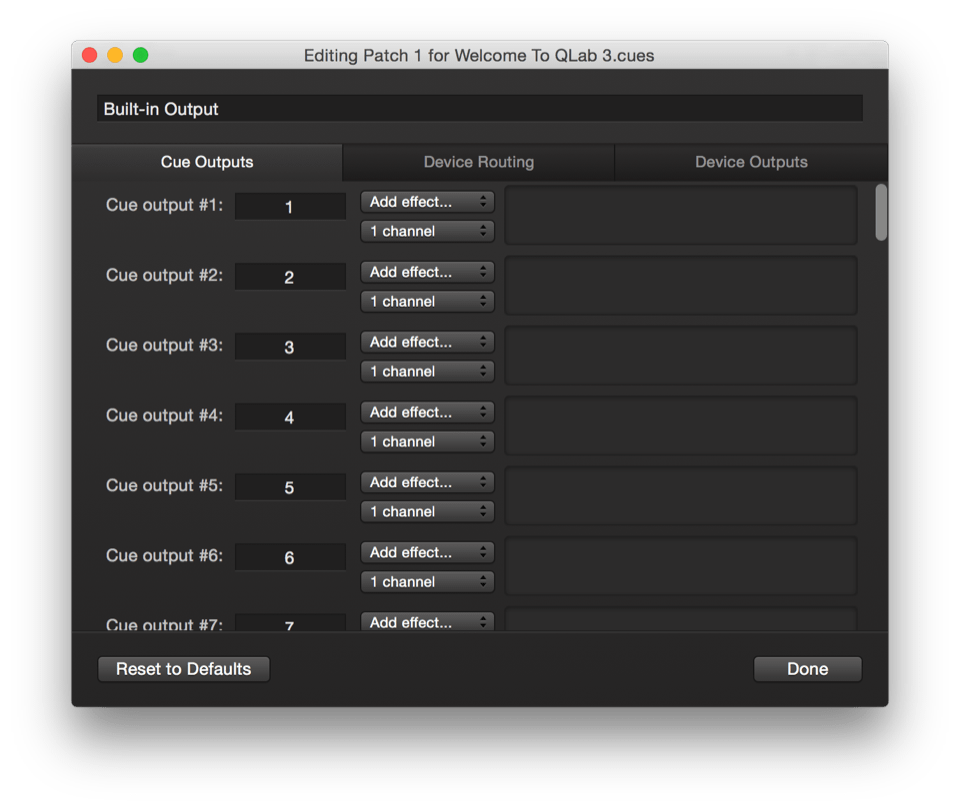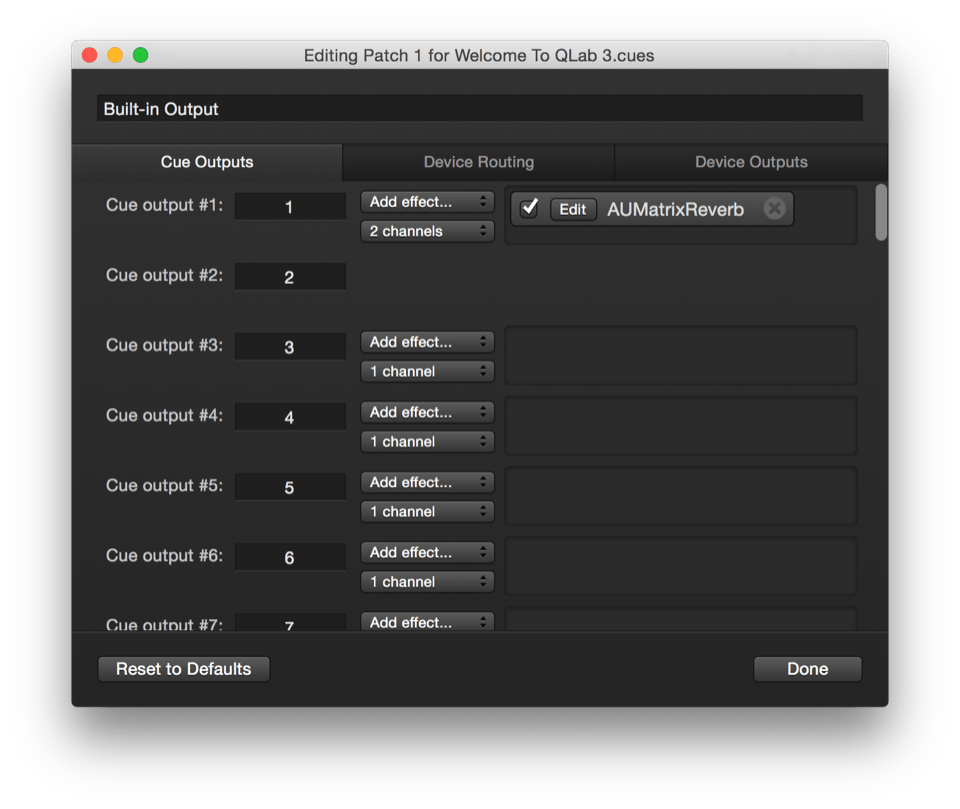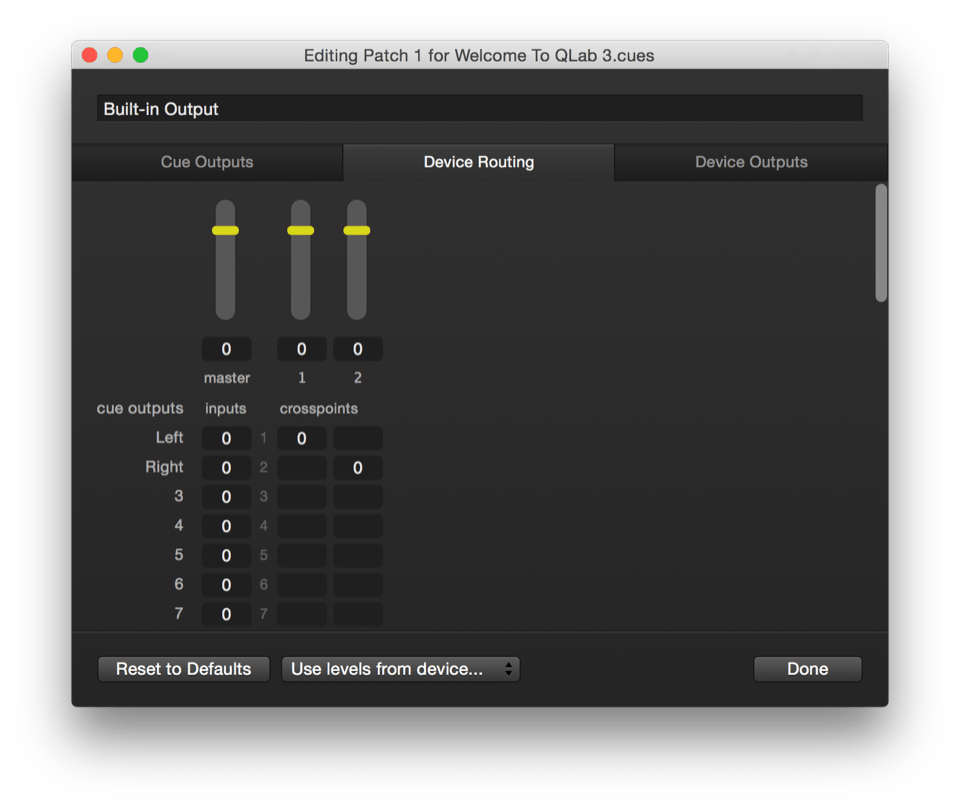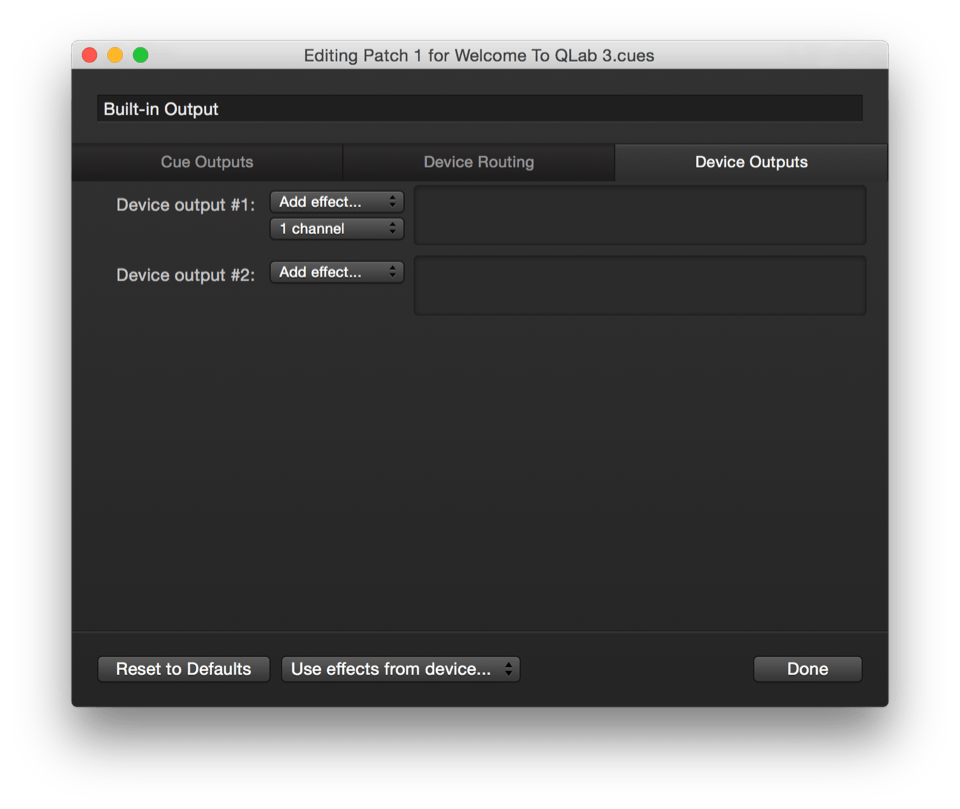The Patch Editor
The Patch Editor allows you to edit the routing of Cue Outputs to Device Outputs, and to add AudioUnit effects to either.
The field at the top of the Patch Editor lets you change the name by which QLab identifies the audio device. Changing the name is purely for convenience, and has no effect outside of QLab.
Cue Outputs
Cue outputs can be thought of as busses or mixes on a traditional audio console. Sound from a cue routes to cue outputs, which are in turn routed to device outputs, which are QLab’s representation of the actual physical outputs on your audio interface. With a Pro Audio or Pro Bundle license installed, QLab has 48 cue outputs. A Basic Audio license gives you eight cue outputs. In any other case, QLab gives you two cue outputs.
You can rename cue outputs from their default numbers to any text you wish. The changed names will be reflected in the Device & Levels tab of the inspector.
The Add effect… dropdown menu will show you a list of all 64-bit compatible AudioUnits installed on the Mac, and by choosing from this list you can apply an AudioUnit to the cue output, much like applying an effect to an aux send on a console or in a DAW. Some AudioUnits (for example, Apple’s AUMatrixReverb) require stereo input, and so you can use the 1 channel dropdown menu to link a cue output to the following cue output, and use them as a stereo pair for the purposes of driving stereo effects.
You can insert multiple AudioUnits on each cue output, and drag them left to right to set the order in which they are inserted.
It’s important to note that running AudioUnits is much more processing intensive than just playing straight audio. It’s not difficult to bring even a powerful Mac to its knees by loading up a bunch of effects, particularly more complex ones such as convolution reverbs.
Device Routing
In this matrix mixer, rows represent cue outputs, and columns represent device outputs. The default routing is one to one, but you can route any or all cue outputs to any or all device outputs at any level.
The Reset to Defaults button at the bottom restores the matrix to its default position.
The Use levels from device… button shows a list of any audio devices that have ever been attached to this workspace, and selecting one attempts to set the current routing to match that of the device when it was last connected.
Device Outputs
Here, you can add AudioUnit effects to the very end of the signal path within QLab. Just like with cue outputs, you can connect device outputs into pairs in order to drive stereo-only AudioUnits.
The Use effects from device… button shows a list of any audio devices that have ever been attached to this workspace, and selecting one attempts to duplicate the arrangement of AudioUnits used with that device when it was last connected.
Audio Signal Flow
Audio travels through QLab in this order:
- File (for Audio Cues) or Audio Interface input (for Mic Cues)
- Input controls
- Cue Audio Effects
- Crosspoint controls
- Cue Output controls
- Master Level control
- Cue Output Audio Effects
- Device Routing matrix
- Device Output Audio Effects
- Audio interface control software (if applicable)
- Audio interface
Still have a question?
Our support team is always happy to help.



